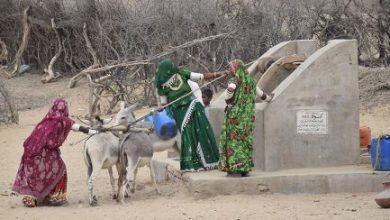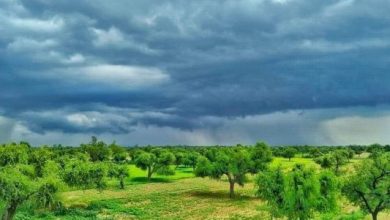Depleting, Polluted Aquifers in Thar Desert

Analyzing the Groundwater Quality Challenges in Tharparkar District of Sindh
By Ali Nawaz Rahimoo
Tharparkar District, located in southeastern Sindh, spans over 22,000 square kilometers and is home to approximately 1.5 million people spread across 2,300 villages and towns. It is administratively divided into six talukas: Mithi, Islamkot, Chachro, Dihlye, Diplo, and Nagarparkar. The region is characterized by low and erratic rainfall, high atmospheric aridity, intense heat, and frequent dust storms. Around 70% of its landscape is dominated by sand dunes and sandy plains, with sparse vegetation. The World Food Program ranks Tharparkar as Pakistan’s most food-insecure district. Tharparkar district has the lowest Human Development Index (HDI) among all districts in the province, with a recorded value of 0.227, making it one of the least developed districts in Pakistan. Despite this, Tharparkar’s geophysical landscape features several distinct ecological zones, shaped by natural forces that influence human settlement and livelihoods. Local folklore has long recognized these zones, each with unique environmental conditions:
Kha’ur (north of Chachro, including Kheensar and Gaddro): Deep aquifers (below 1,200 feet) exist here. Due to small sand dunes, surface runoff is minimal, limiting natural water collection through traditional methods like trais, tobhas, or varies. Vegetation is sparse, and the terrain appears barren.
Kantho (south of Chachro to northern Nagarparkar): This zone has relatively favorable conditions, with aquifers at 150–300 feet depth, fair rainfall, and fertile soils. However, fresh water lenses often sit atop brackish, fluoride-contaminated groundwater. Wells here are typically 3–4 feet in diameter.
Parker (Karoonjhar Hills and rocky plains): Monsoon runoff is channeled into streams, recharging shallow aquifers. Wells, often only 10–30 feet deep, supply drinking water and support seasonal gardening. However, high evaporation rates often limit water availability.
Dhat (central Thar, mainly Chachro and northern Mithi): Shallow wells tap into up to four perched aquifers. Runoff is limited, but tarais and tobhas collect rainwater in low-lying areas for drinking purposes.
Vat (southern Diplo and Mithi to the Kutch marsh): High runoff and soil permeability allow some recharge of shallow aquifers (20–50 feet deep). However, saltwater intrusion and silting are major concerns due to proximity to marshlands.
Samroti (southwest Mithi to northern Diplo): Fertile soil and shallow wells support agriculture and livestock. However, the northern part of Samroti (sometimes called Vango) suffers from low precipitation and seasonal water scarcity.
Muhrano: Historically, this referred to the region along the eastern banks of the ancient River Mehran, now dry.

Water Scarcity and Pollution
Water is a scarce and vital resource in Tharparkar. Drinking water is essential not only for human survival but also for sustaining livestock, agriculture, and social stability. In the absence of public water supply systems, most residents rely on groundwater, which is often brackish and highly contaminated with fluoride. Tharparkar is one of the most fluoride-affected regions in Pakistan. When surface water sources dry up, communities resort to using groundwater with dangerously high fluoride concentrations, often exceeding 1.5 mg/L—the World Health Organization’s recommended limit. Prolonged exposure causes fluorosis, which is irreversible and leads to serious health issues such as dental and skeletal fluorosis, joint pain, bone deformities, and nervous system damage; thyroid and kidney complications. Healthcare access in the district is extremely limited, and malnutrition and poverty worsen the impact. Women and girls often walk long distances to fetch water daily, sacrificing education and income opportunities, and carrying heavy loads puts pregnant women at risk.
Agricultural Impact
The main crops in Tharparkar—millet, mung beans, bulgur wheat, chili, and oilseed—are drought-resistant but still suffer during prolonged dry spells. Fresh fruits and vegetables are rare, and multiple consecutive years of poor rainfall lead to food shortages and increased poverty.
Groundwater Quality
A 2010 study by Dow University of Health Sciences, the Pakistan Council for Scientific and Industrial Research, and local NGO AWARE revealed that over 80% of Tharparkar’s groundwater is unfit for human consumption. A detailed water quality analysis (2003–2008) showed that more than 50% of residents use water with Total Dissolved Solids (TDS) exceeding 5,000 mg/L. In Naroowari village, TDS levels reached up to 20,000 mg/L (the WHO’s safe limit is 1,500 mg/L). Fluoride concentrations as high as 32 mg/L were found.
Water Resource Management
Traditional water sources include open wells, hand pumps, tube wells, and rainwater reservoirs. Most wells are privately owned but also exist in communal and government forms. Thari have long used indigenous methods such as camel/donkey-driven water-lifting systems and dug wells to conserve water during droughts. However, modern interventions like government-installed tube wells and reverse osmosis (RO) plants have largely failed due to technical, economic, and operational challenges. Tharparkar’s diverse ecological zones demand customized and community-driven water management strategies. Key recommendations include:
Installing defluoridation and desalination plants
Building check dams for artificial groundwater recharge
Ensuring equitable access to water across all communities
Involving locals in planning, operation, and maintenance of water schemes
Encouraging affordable, small-scale technologies like solar pumps, windmills, and community-owned RO plants.
Tharparkar’s water crisis is complex, but with localized planning, community engagement, and sustainable solutions, the region can move toward safer water access and improved public health.
Read: A Season of Life, Beauty, and Revival
______________
 Ali Nawaz Rahimoo, based in Umerkot, Sindh is a social development professional. He can be contacted on anrahimoo@gmail.com
Ali Nawaz Rahimoo, based in Umerkot, Sindh is a social development professional. He can be contacted on anrahimoo@gmail.com





Tharparkar district urgently needs long-term and sustainable development. Since the intervention of the Thar Coal project, the underground water table has significantly declined. Due to climate change, Thar faces drought almost every third year. Shockingly, even in the 21st century, many people in Thar still rely on traditional dug wells to collect water. Immediate attention and climate-resilient solutions are essential for the survival and dignity of Thari communities